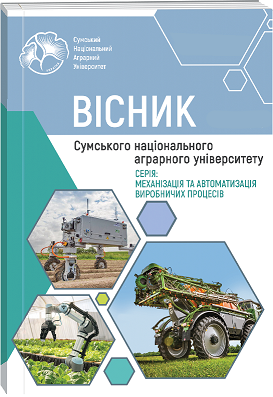CURRENT TRENDS IN THE USE OF BUTTON MUSHROOMS (AGARICUS BISPORUS) POWDER IN THE TECHNOLOGY OF MINCED MEAT POULTRY PRODUCTS
Abstract
The article presents the results of research on the use of button mushrooms (Agaricus bisporus) powder in the technology of minced meat poultry products. Current trends in the consumption of poultry products with reduced energy value are considered. Attention is drawn to the significant shortage of meat resources and the growing volumes of imported meat raw materials on the food market, which differs from the domestic one in terms of a number of the most important functional properties and chemical composition. The acute need for proteins in the diet of modern man was identified, especially during the period of military operations and in conditions of increased stress. It is noted that the rich nutritional composition of poultry meat in finished products can be enriched with additional valuable components, where at the stage of forming minced meat, recipe compositions can be created that will be balanced in terms of nutritional value and have high organoleptic characteristics. A technological solution to the use of Agaricus bisporus mushroom powder in the production of poultry cutlets is proposed, which is a worthy response to the existing risks and challenges of society, and with the aim of attracting additional consumers, preventing a number of diseases, and improving the vital indicators of the human body. Research has established the amount of powder of Agaricus bisporus added to the recipe of poultry cutlets in the amount of 15 % of the mass of minced poultry. A positive effect on the improvement of the organoleptic characteristics of finished products was revealed. The perspective of using this type of mushroom raw material for the purpose of obtaining minced poultry products with a functional purpose is outlined.
References
2. Brassard D., Laramée C., Provencher V., Vohl M.C., Robitaille J., Lemieux S. & Lamarche B. Consumption of low nutritive value foods and cardiometabolic risk factors among French-speaking adults from Quebec, Canada : the PREDISE study. Nutrition journal. 2019. Vol. 18(1). P. 49. doi: 10.1186/s12937-019-0474-y
3. Daniel C.R., Cross A.J., Koebnick C. & Sinha R. Trends in meat consumption in the USA. Public Health Nutr. 2018. Vol. 14. P. 575–583.
4. Feng Y., Zhang J., Wen C., Sedem Dzah C., Chidimma Juliet I., Duan Y., Zhang H. Recent advances in Agaricus bisporus polysaccharides: Extraction, purification, physicochemical characterization and bioactivities. Process Biochem. 2020. Vol. 94. P. 39–50. doi: 10.1016/j.procbio.2020.04.010
5. Hladkyi F. Sensornyi analiz kharchovykh produktiv – [Sensory analysis of food products]. Kharkiv : Tekhnolohichnyi tsentr, 2018. 131 p.
6. Marangoni F., Corsello G., Cricelli C., Ferrara N., Ghiselli A., Lucchin L. & Poli A. Role of poultry meat in a balanced diet aimed at maintaining health and wellbeing: an Italian consensus document. Food & Nutrition Research. 2015. Vol. 59. P. 27606. doi 10.3402/fnr.v59.27606
7. Mazidi M., Kengne A., George E. & Siervo M. The association of red meat intake with inflammation and circulating intermediate biomarkers of type 2 diabetes is mediated by central adiposity. British Journal of Nutrition. 2021. Vol. 125(9). P. 1043–1050. doi: 10.1017/S0007114519002149
8. Niego A.G., Rapior S., Thongklang N., Raspé O., Jaidee W., Lumyong S. & Hyde K.D. Macrofungi as a Nutraceutical Source: Promising Bioactive Compounds and Market Value. Journal of fungi (Basel, Switzerland). 2021. Vol. 7(5). P. 397. doi: 10.3390/jof7050397
9. Zięba P., Sękara A., Sułkowska-Ziaja K. & Muszyńska B. Culinary and Medicinal Mushrooms: Insight into Growing Technologies. Acta Mycologica. 2020. Vol. 55(2). P. 1–19. doi: 10.5586/am.5526

 ISSN
ISSN  ISSN
ISSN 



